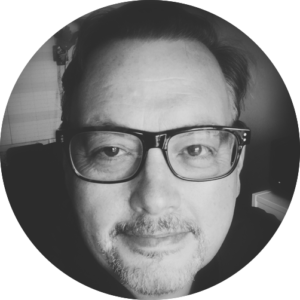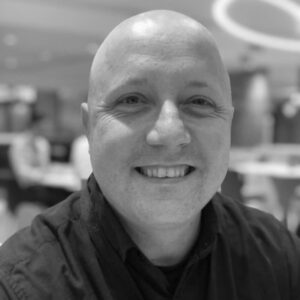The Challenge: Lack of Alignment and Planning Struggles Slowed the Agile Scaling Journey As they…
Case Study
A Leading Pharmaceutical Company Works With Cprime to Nearly Double Speed and Efficiency, Saving Billions
Company Details
Industry: Life Sciences, Pharmaceutical
Company Size: Over 90,000 employees
Location: London, England, UK; offices worldwide
Products: Medications, vaccines
Cprime Services:
Executive Summary
One of the company’s software development teams had been exploring better ways of working for some time in conjunction with a massive tooling project—moving from legacy applications to a newer SaaS Planning/Materials/Distribution (PMD) solution for managing clinical trials. The effort was slow to progress and ran into some challenges that prompted reaching out to Cprime for coaching and transformational consultation. Measurable improvements in velocity and efficiency, beneficial cultural change, and enhanced value delivery have been the result.

The Challenge: Attempting a Transformation Within a Transformation
A digital or Agile transformation is always going to be a long and challenging effort, especially at the enterprise level. This company has been pursuing a large-scale digital transformation for years now, which causes change at all levels. Amidst this change, they tasked the development team with undertaking a huge tooling project and, to accomplish that, an Agile transformation of their own.
Migrating to a new SaaS platform
The coordination and management of clinical drug trials involves a lot of moving parts, and the cost of mismanagement can be very high. The team had relied on custom applications for many years to support this process. But, considering the advancements made in the tools available, and the cost of keeping up an aging infrastructure, the organization decided in 2018 to invest in a new cloud-based SaaS solution for the PMD functions.
The development team’s Director and Product Owner explains, “While it sounds logical to think moving to a SaaS solution would mean everything is simplified and made easier, the reality is quite different. There’s a tremendous amount of data involved and several key integrations that need to be duplicated, migrated, or reconfigured.”
And, of course, work can’t be put on hold for the duration of this process, so all of that work needs to be done while both tools and all integrations are live and the data is constantly changing.
“I equate it to jumping onto a moving bus,” he says.
Pursuing scaled Agility
After joining the team as Product Owner in 2019, the Director became responsible for delivery, engineering, and product management, in addition to the tooling migration. With the resources available, the only practical way to get a handle on the workload was to double down on the scaled Agile transformation the team had already begun.
“We were technically ‘doing Agile’,” he says, “but there was a lot of room for improvement. Specifically, we needed to get better organized and consistent around processes, roles, and expectations.”
He took an important step by working to get Agile Facilitators (Scrum Masters) installed in the four existing Agile teams to add that layer of oversight and coordination. He continues, “I think bringing in the Agile Facilitators gave us better insight into where we were struggling. For example, we were moving people to the work rather than work to the people. We were heading into sprint planning without having fully refined our backlog, and then refining as the sprint progressed.”
By surfacing these gaps in their Agile practice, the team could start formulating a plan to fill them.
Overcoming inertia
Of course, change rarely comes easily. Especially in very large organizations, inertia can be a formidable obstacle.
Moving to new ways of working comes with a cost—financially and psychologically. “The way we’ve always done it” is not just an excuse. It’s a security blanket that protects the organization from new ideas that can sometimes be scary.
And the larger organization was already experiencing a lot of change as part of their ongoing multi-year digital transformation. So, additional change was an even harder sell. After all, the changes weren’t just tool- or process-related. They involved changes in mindset and culture.
The Director says, “I realized quickly that we would need to create a solid plan of attack that would garner support from others in the organization if we had any hope of making changes that would stick.”
The COVID-19 pandemic
On top of everything else, in early 2020, the global pandemic hit with its accompanying upheaval and uncertainty. The teams had to quickly learn how to work and collaborate remotely, which is not the standard for Agile teams. Over the next two years, significant staff turnover also took its toll on the team’s efforts.
Despite all this, they made progress. In June 2021, they launched the planning module on the new platform.
“Over the eighteen months it took to achieve that goal, we learned a lot about where we were and where we needed to be,” he says. “The key takeaway to me was that if we wanted to continue to progress, we needed help.”
That’s when Scott Seivwright, Executive Agile Coach with Cprime, began consulting with the team.
The Solution: A More Formalized Approach to Scaled Agility and Expert Guidance
Scott recalls, “When the Director and I first spoke, I could see that a lot of the pieces were there, but that they were missing structure and consistency.”
To address this issue, Scott recommended the Scaled Agile Framework® (SAFe®) as a template from which the team could build a structured combination of roles, ceremonies, artifacts, and processes to formalize and systematize their Agile practice.
(SAFe and Scaled Agile Framework are registered trademarks of Scaled Agile, Inc.)
To test the validity of this plan, they pursued a pilot program in the UK. The Cprime team resourced Agile professionals who could take on vital roles in the SAFe transformation. They also liaised with external suppliers and internal teams to coordinate the software delivery, data systems, and integrations that would link the existing stack with new APIs and platform solutions.
Then, in March 2021, the teams headed into the core SAFe ceremony, the quarterly PI planning session.
Big-room PI planning
Optimally, PI planning is an opportunity for all stakeholders connected to the Agile Release Train (ART)—the SAFe designation for a “team of Agile teams”—to meet together, in person, to discuss the next six sprints’ worth of work. Of course, with the pandemic still affecting many areas, getting everyone together wasn’t possible.
The Director recalls, “Although we had to make do with a mostly virtual PI planning event, I think it was a huge step forward for us. It was the first time we could get the right people together all at once from both the business and tech sides to discuss what we needed to do, what stood in our way, and how to address those issues. It fostered communication and collaboration that we vitally needed.”
The event spotlighted more areas for improvement as well, which informed future planning events and the Cprime team’s strategies.
“At the time,” Scott says, “the clinical trial program was running at an overall efficiency rate of about 48 percent. In other words, a little less than half of the drugs being sent out in support of various clinical trials were actually reaching the right person at the right time to produce valid, timely results. So, in order to avoid invalidating the tests, the company was spending about twice what they should have been to cover for inefficiencies and waste in the process. This was our starting point.”
Bringing in an Agile Coach to serve as RTE
The next step in the process was for Scott to bring in Brandon Hill-Jowett, Cprime Agile Coach and Release Train Engineer (RTE). The Release Train is the SAFe designation for the coordinated effort required for a team of Agile teams to accomplish the work planned for each planning increment. It’s the RTE’s job to lead that train, remove any impediments standing in its way, and keep it speeding down the track.
“Bringing Brandon on made an immediate impact,” the Director says. “He’s given us a huge amount of energy and drive, and a clear vision of what we need to achieve. He’s a fantastic coach, and I’ve seen the increase in Agile and SAFe knowledge—both my own and in the team—and how much that’s leveled up our work.”
Brandon says, “After that initial PI event, we came away with a clearer understanding of the blockers holding the team back from taking the next step. For example, we found that estimates for the work required to accomplish a given goal were as much as 265 percent low for a variety of reasons: internal dependencies, unreliable systems, scope variance, delays from outside vendors, and erroneous testing cycle times. Now that we’d set up a dialogue with the business side, those explanations went a long way toward justifying the need for change.”
Brandon worked with the Director and other stakeholders to identify systemic problems that could be rectified through incremental change and a focus on continuous improvement. They set up SAFe ceremonies on a regular cadence to support collaboration and fuel regular progress. They also created an Executive Action Committee (EAC) that meets regularly to discuss and rectify dependencies and blockers on the business side, make decisions to guide the team’s strategy, and keep the rest of the organization informed.
“We created cross-functional teams during the final PI of 2022,” Brandon says, “and we’re now working on optimizing the ART so we can keep this momentum going.”
The Results: The Team Sees Both Measurable and Unmeasurable Affects in Short Order
The results of these efforts have been nothing short of fantastic.
Massive improvements in productivity
Brandon reports, “We’ve seen predictability rise from 45 percent to 80 percent, which means our planning is becoming far more accurate and work is getting done consistently. Since establishing cross-functional teams, we’ve seen velocity double, meaning twice as much is getting accomplished each sprint.”
The Director agrees, “Our technical capabilities and engineering function have gotten much stronger. By improving our ability to quickly and efficiently update and develop our systems, we’re able to get working software in the hands of the user faster. Then, we get feedback faster and can turn that into further improvements. So, we’re delivering more value to our customers, faster than ever.”
Brandon continues, “Mapping out the previous processes, we calculated an average release time of 548 days (about 18 months). We forecast that the efficiencies we’ve proposed will reduce that release cycle by 73 percent to just 149 days (about five months). Overall, we forecast we will increase that 48 percent efficiency up to 80 percent, saving the company billions of pounds annually.”
A better culture to support a better way of working
Some of the benefits are less tangible, but no less important.
“I’m seeing marked changes in the culture and attitudes of those in and around this team,” the Director says. “There’s greater psychological safety and trust. We’re working together more effectively, both within the tech department and with the business side. In this kind of environment, it’s becoming easier to ask the right questions, entertain innovative ideas, and collaborate freely because we’re working toward common goals.”
He concludes, “In the end, our goal is to help more people with the life-saving and life-changing drugs the company develops. Every step we take to improve our piece of that puzzle means we’re achieving that goal.”
Interested in similar results for your organization? Explore our flexible Agile Scaling solutions.
About Cprime
Cprime is an industry-leading, full-service global consulting firm with a focus on providing integrated and innovative solutions around digital transformation, product, cloud, and technology. With over 20 years’ experience, we provide strategic and technical expertise to businesses across more than 50 industries. Our team of advisors and technical experts have the know-how to meet organizations where they are to develop actionable solutions and solve business challenges. We also collaborate with our expansive network of partners to design, deploy, and harmonize technology stacks across organizations. Our mission is to empower visionary business leaders and teams to reimagine the future of work to achieve better outcomes.
Want to share with a colleague? Download the PDFFeatured Team Members

Scott Seivwright
Executive Agile Coach, Cprime


